
Greg Kasavin is the writer and creative director at Supergiant Games, the small independent studio behind Hades, Pyre, Transistor, and Bastion. Prior to Supergiant, Greg worked at 2K Games, Electronic Arts, and GameSpot. He’s @kasavin on Twitter.
I’ll never forget this year, that’s for sure. For the first three quarters, I was trying to tune out all the chaos of 2020 and stay focused on the last stretch of development of Hades, which I’d been working on since 2017. Then in the last quarter, I’ve been reeling from the amazing response to the launch of the game. I feel extraordinarily fortunate to be part of such a talented team, to have had the opportunity to do some of the best work of my life on this project, and to have been able to continue working on it with all my might this year. Nonetheless, this was an intense and exhausting period that often left me with little time, energy, or even desire to play games outside of what I was doing for work (I played a lot of Hades this year). But I still enjoyed and found solace in a bunch of new games from studios of all shapes and sizes.
Though before I get into my favorites, as in years past, I want to begin by highlighting some of the games I just didn’t get to. Here we go!
My Top 10 Games I Didn’t Play Enough
There were a lot of games I just didn’t have the energy or time to really get into this year despite my brain repeatedly telling me “you should check this out both for personal and professional reasons; you’ll probably like it!”. I want to highlight some of these, if only to acknowledge their omission from my Top 10 below, and also to say a few words about why they’re interesting to me. Note this list is in alphabetical order.
Astro's Playroom
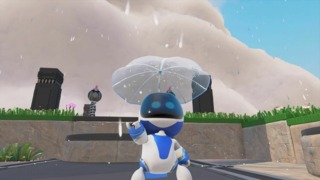
This PlayStation 5 pack-in is such a cool showcase of Sony’s new console and the legacy of PlayStation hardware and software over the years. It feels like an interactive museum / theme park all about PlayStation, and seeing those old consoles and peripherals rendered in such exacting detail as part of the game’s vibrant world filled me with more nostalgia than I thought I could muster. It’s a super charming, inventive, high-quality, great-looking platformer, and I love that it’s included with the system. I’ve been around long enough to remember when Sony was the newcomer to video game consoles, but by now, PlayStation has such a rich history, as expressed and celebrated through this great little game.
Animal Crossing: New Horizons
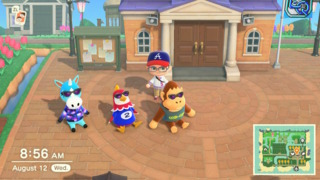
Amid all the madness of the growing pandemic this year, something truly bizarre happened in my household: All the sudden, every member of my household was playing video games, except for me! I was in the thick of work on Hades, and felt I didn’t have time to play anything for fun. My wife normally doesn’t touch the stuff, but Animal Crossing was a rare exception, and this time she and my daughter really got into New Horizons and played it each day for weeks. I experienced Animal Crossing vicariously through them but barely touched it myself. So it’s in a weird spot for me--technically I can’t say I’ve played it for more than an hour or so, but it’s still one of my favorite, most cherished games of the year, just because my family enjoyed it.
Cyberpunk 2077
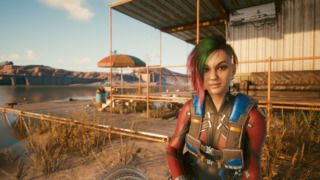
I ran into enough issues playing this on launch day on PC that I decided I’d come back to it this coming year. From what I did play, I’m not sure this game will resonate with me the way Witchers 2 and III did, as I’m just more excited by Geralt as a character than I am about Cyberpunk’s make-your-own-protagonist, V. But I do want to see the sights of the big, teeming setting of Night City, meet its characters, and discover its stories. I feel deeply for the developers of this game, who clearly set their sights so high and had extraordinarily big shoes to fill. And I’m always interested to play games that try to do this much, and be so many things to so many people. Beyond the experience of the game itself, it’s almost like an archeological / anthropological experience for me. What happened here? How did they do this, and why? Those questions interest me with any game I play, but especially while playing big AAA blockbusters where I can hardly begin to imagine how they even exist.
Genshin Impact

I think Genshin Impact might go down as the most important game of the year, in terms of what it means for the industry. It completely upends what can be expected of a free-to-play game, by presenting a level of production quality well beyond what many $60 titles have to offer. I played just long enough to where I could feel it starting to suck me in, and I was busy with work at the time, so I walked back from the brink. But now my daughter’s playing it, and she doesn’t even normally play games like this, and I see its power and appeal. It’s a really pretty game with surprisingly great-feeling interactions, and it mashes up elements of character action games and Zelda: Breath of the Wild. How did they make something like this, and launch it on so many platforms? What an amazing feat.
Immortals: Fenyx Rising
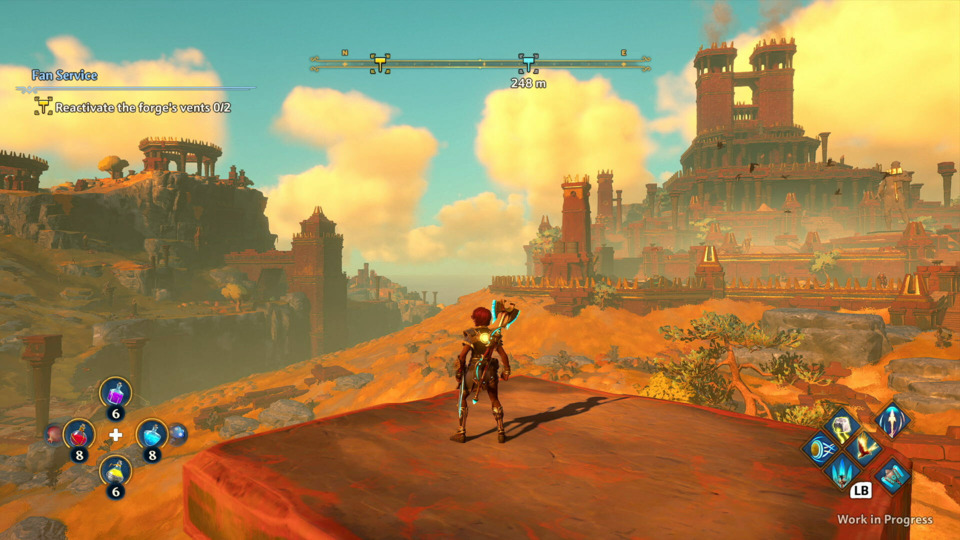
I’ve been interested in any new media based on Greek myth if only for professional reasons, and I keep hearing good things about how the team at Ubisoft pulled it off in Immortals. Looks like the game takes inspiration from Breath of the Wild, and between that and a more lighthearted tone than is customary for Ubisoft games, it’s definitely got my attention as something I want to check out.
Kentucky Route Zero
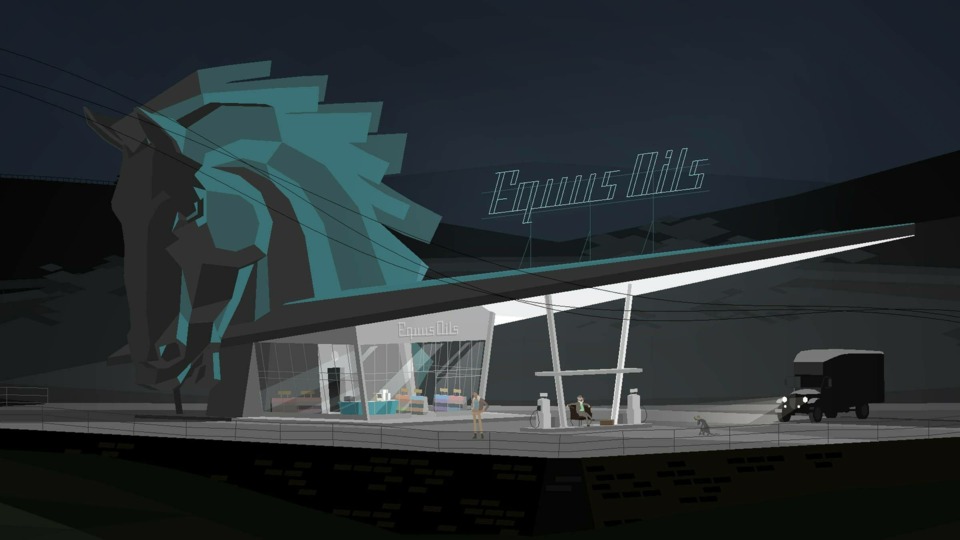
Years in the making, Kentucky Route Zero is a magical-realist narrative game with a really beautiful presentation and a one-of-a-kind atmosphere. The final episode finally launched this year, marking the game as finally complete. It’s one of those games that almost feels like staring at the sun when I play it, it’s that sublime. Consequently, I haven’t finished it yet… it’s weirdly almost painful for me to play, as too much of it hits home in too many ways, both personally and professionally. But it’s one of those games that anyone interested in storytelling in games needs to experience.
Marvel's Spider-Man: Miles Morales
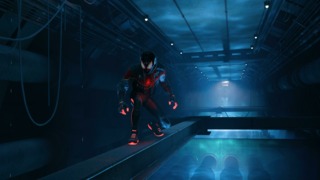
Insomniac’s Spider-Man was one of my favorite games of 2018, during what had to have been the best year ever for the character, between that game and the theatrical release of Enter the Spider-Verse (the last piece of media seemingly everybody on the Internet enjoyed). My son loved it, too, so Miles Morales was at the top of the things he wanted for the holidays... and now that he’s finished playing through its story, I can finally get my hands on it. I saw plenty of it while he played, and it looks like another really well-told story set in a big open world that’s a joy to web-sling across. Insomniac’s storytelling was so top-notch in Spider-Man that I’m excited to see how Miles Morales builds on that.
The Pathless
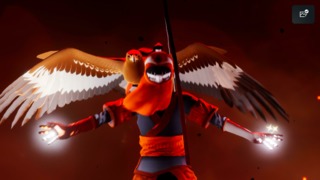
I just started playing this beautiful-looking action/exploration game from the creators of Abzû, some of whom also worked on Journey. The artistry is once again totally on point, and I love the look and feel of the mystical setting, which reminds me of an old favorite, Okami. Zooming around through this world both on foot and by eagle seems really cool, I just haven’t delved deep enough yet.
Star Wars: Squadrons
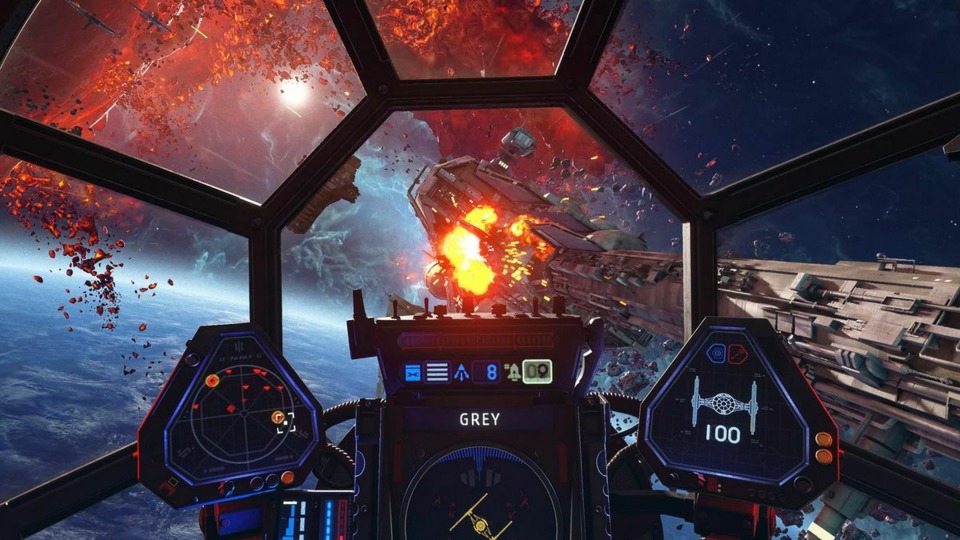
I’ve been waiting a while for space combat games to make their glorious comeback to mainstream popularity, and they did this year in Star Wars: Squadrons. Why haven’t I played it yet? I have no idea. I may be a little Star Warsed out, or maybe just jealous, or couldn’t decide which platform to play on, or whether to play in VR or not, or such excuses. But I have such fond memories of playing X-Wing and especially TIE Fighter back in the day that I really owe it to myself to check this out.
Yakuza: Like a Dragon
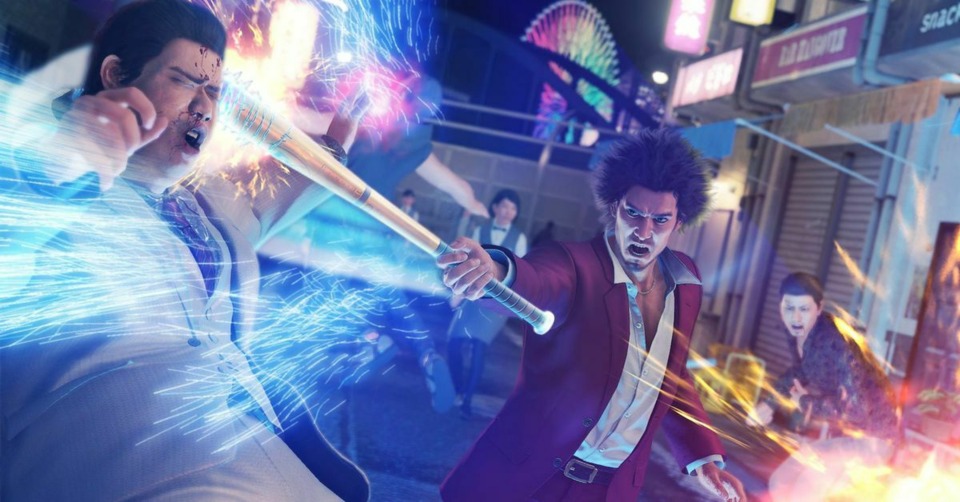
When I was in college, dreaming about what game I would make if I could both make games at all and make any game I wanted, I dreamed of making a Yakuza-themed role-playing game… and here, at last, is that game. What’s stopping me from playing? I have to admit, the series’ change of genre, tone, and protagonist does kind of throw me, on first impression. I haven’t played the later Yakuza games, but I love Kiryu Kazuma as a protagonist, and loved the combination brawler/RPG gameplay. This latest game leaning into the ridiculous over-the-top qualities that the series always kept just a little veiled makes me wonder if it might not sit right with me, but on the other hand, I feel grateful that this game exists at all and really should try it and see how it matches with my expectations.
Those are the top games I mean to get to! Of course there are tons of other games I’ve told myself I should play, or play more, such as breakout hits like Among Us, Phasmophobia, and Fall Guys, as well as Deep Rock Galactic, which several of my colleagues at Supergiant have been really enjoying. But I’m often left feeling deeply antisocial at the end of the day, and haven’t felt the draw to play these kinds of multiplayer-focused experiences… just not the right thing for me right now, though it’s been amazing to see their success. Now, with all that said, time for the main event!
My Top 10 Games of 2020
The main thing to understand about my list is that I’m copping out of ranking my favorites and just putting them in alphabetical order, because the degree to which I liked one of the following games over another was ultimately pretty narrow. There was no one stand-out game for me, like last year’s Sekiro, that I could say was certainly my favorite. I’m also aware of how sequel-heavy / remake-heavy my list is, for better or worse. Though having said that, I feel better for having played all the following, some of which I’m still enjoying now:
Demon's Souls
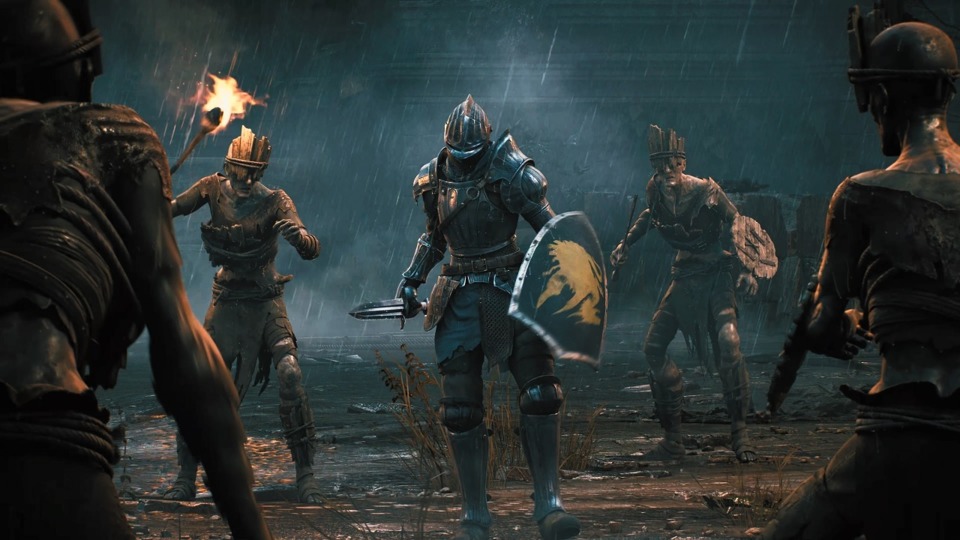
I only got my hands on a PlayStation 5 a few scant days before this writing, after a desperate search, but I’ve played enough of the Demon’s Souls remaster to know I love it. Especially as a longtime fan of FromSoftware, I adored 2009’s Demon’s Souls, which wasn’t like anything I’d ever played… except for maybe EverQuest, the brutally challenging precursor to World of Warcraft, where, each time you died, you had to get back to where you fell to recover all your gear... or else lose it forever. The ‘corpse run’ was a harrowing, often miserable experience, but an incredibly compelling one, and Demon’s Souls is built around that idea… a game design that severely punishes recklessness and frustration, and rewards patience and care. Its memorable, bleak world, amazing variety of fearsome foes, intricate melee combat, innovative online features, and sheer challenge resulted in a genuinely unique, genre-defining game that confidently rejected so much conventional design wisdom.
Cut to the present: I think it’s wonderful that, what started as this obscure cult classic that set the stage for a much bigger hit in Dark Souls, is now one of the most sought-after PlayStation 5 launch titles. And rightly so. Developer Bluepoint did a bang-up job of updating the original in this often-stunning-looking game, and faster loading times and other quality-of-life changes I think do meaningfully improve the experience without ruining what was special. I sank like 80 hours into the original Demon’s Souls, but never finished it. Maybe I’ll get there this time?
Doom Eternal
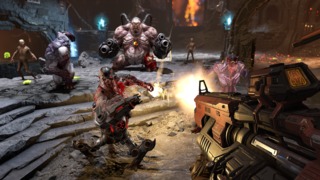
The 2016 reboot of Doom was one of my absolute favorite games that year, so I approached Doom Eternal the way I always approach sequels to my favorite things: with a great deal of caution and tempered expectations. Even if a sequel has tons of improved features, it tends to have an extraordinarily difficult time of recapturing the magic and surprise of its predecessor. What I discovered in Doom Eternal was a game that expanded on the relentlessly heart-pounding action of its predecessor in exciting ways, with more depth and intricacy and even wilder level design, making for one of the most thrilling experiences I’ve played this year. While some of the story and tonal shifts didn’t land for me as perfectly as the previous game’s surprisingly efficient storytelling, Doom Eternal once again reminded me how much I used to love first-person shooters.
Final Fantasy VII Remake
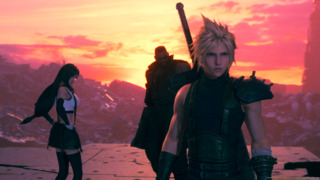
While I said I don’t really have a single Game of the Year this year, if you really forced me to pick one right now, it would probably be this. I was already a big fan of Final Fantasy by the time I played the original Final Fantasy VII back in the ‘90s, and was one of many players blown away by its sheer ambition and spectacle. I think the developers of this year’s Remake took on a nearly hopeless challenge in trying to recapture what was so special about that game. So I was very pleasantly surprised and impressed by the result.
The raw production quality of Final Fantasy VII Remake blew me away, from the beautifully detailed characters to the amazing musical score. I think this might be the best-looking game I’ve ever played? But what I really appreciated was how Remake deviated from the original, rather than slavishly trying to stay true to it (and falling into the trap of even trying). My favorite example is how the side characters Biggs, Wedge, and Jessie get so much more development in Remake--that aspect is outright better than the original. While I felt like the game hit its highest points around halfway through or so, with some genuinely subtle and emotional moments, I still thought it was amazing on the whole. I was particularly impressed with Cody Christian’s performance as Cloud Strife, bringing to life this cool, enigmatic character with empathy and warmth. Aerith and Tifa were great, too. I think these are really tough characters to get right.
Ghost of Tsushima
In many ways, this is the game of my dreams. I have a lifelong obsession with samurai cinema, and Ghost of Tsushima is like a samurai epic told through a gorgeous, smartly crafted open-world game. Well-written characters, lots of great quality-of-life choices for an open-world structure, and exciting responsive combat and traversal, all wrapped up in a vivid portrayal of feudal Japan… I was just as often enjoying it as I was more than a little jealous of it. The developer, Sucker Punch, has been belting out great games for years now, and I’m always heartened when a bigger team like this is rewarded for creating original IP. I can only imagine how scary it must have been for a Western team to set out to make an authentically Japanese game. But, having just worked on a game based on Greek myth despite not being ethnically Greek, I’m of the mind that you don’t need to belong to a culture to be able to appreciate, honor, and have something meaningful to say about that culture; and in fact, that outsider’s perspective can give the resulting work its distinctive character and merit. All that aside… Ghost of Tsushima is a great, thoughtfully made, refined example of what AAA games can be.
Half-Life: Alyx
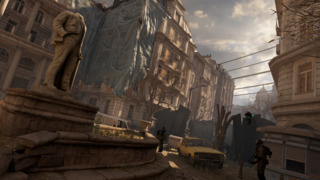
I’m still playing through Half-Life: Alyx, but I’ve played enough to join the ranks of everyone who says it must be experienced to be appreciated. The physicality and scale of the world is beyond what other games can achieve. Bog-standard interactions in games that are easy to take for granted--reloading a pistol, using a healing station, putting stuff into your inventory--are a joy in this game. And the central mechanic, using Alyx’s gravity gloves to essentially “Force pull” objects over to you and snatch them, is just fantastic, and something that feels uniquely possible in VR. Plus, it feels so good to be back in Half-Life’s distinctive and iconic sci-fi world (I should say Half-Life 2’s world in particular), something like a cross between George Orwell’s 1984 and H.G. Wells’ War of the Worlds. I’ve long been a VR skeptic, but having picked up an Oculus Quest earlier this year, and having played some of this amazing game, I’m becoming a believer. And, I’m just so happy to see Valve back to making new games again. Valve got to where it is today by being an industry leader in ingeniously designed, finely crafted games with well-told stories and characters, and Half-Life: Alyx shows they’ve still got the magic touch.
Ori and the Will of the Wisps
The sequel to one of my favorite games of 2015 is even better than the original, smoothing out the punishing difficulty while retaining plenty of challenge, expanding on the Metroidvania gameplay in lots of inventive ways, and delivering a great little story efficiently told through wonderfully animated, evocative scenes. It’s an absolutely beautiful, incredibly vibrant game where just navigating through the world is a joy--always the tell-tale mark of a great game, when just moving around feels great. It’s a game with real meat on its bones, too, with its tough boss fights and chase sequences standing out amid all the platforming and exploration. I was awed by many aspects of Ori and the Will of the Wisps, from the basic movement of the character, to some of the set-piece moments, to the fantastic musical score. It’s the closest thing to a playable Ghibli movie I’ve experienced.
Streets of Rage 4
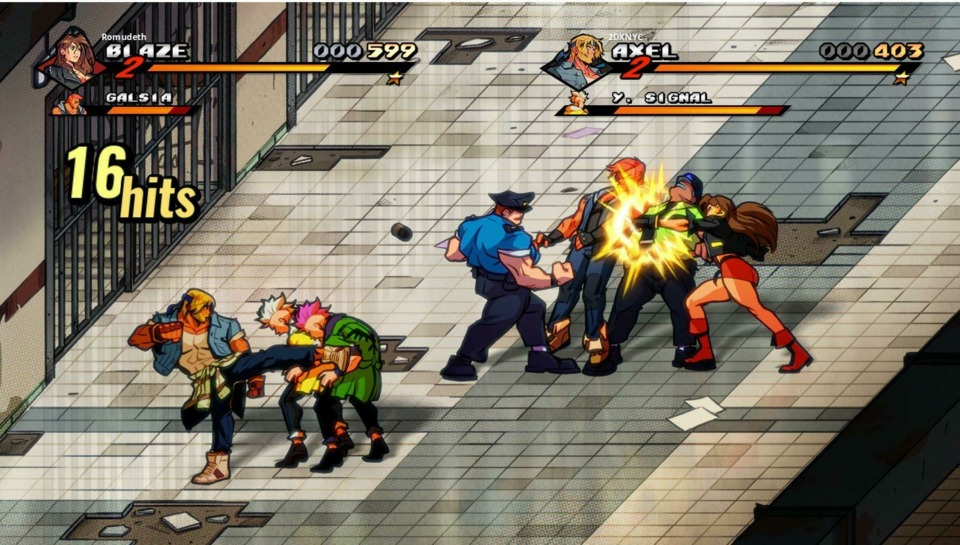
I really enjoyed developer Lizardcube’s gorgeously illustrated and animated remake, Wonder Boy: The Dragon’s Trap, so I was very excited to see what they would do with one of my favorite old Sega Genesis franchises, in an old favorite genre I feel is primed for a huge comeback. Streets of Rage 4 certainly lived up to my expectations, with its fantastic character designs and animation, fun cooperative brawling action, and great mix of new and old characters. I played through the whole campaign with my son, a bright spot for me this year that made me think about how relatively rare these types of same-screen co-op experiences seem to have become. I still feel like brawlers are just one or two smart design choices away from blowing up even harder, as plowing through the same levels and not-that-smart thugs over and over does eventually get old. But for what it is, Streets of Rage 4 is a faithful, artfully made successor to one of the great action game series of the early ‘90s, and I enjoyed every minute of my time with it.
The Last of Us Part II
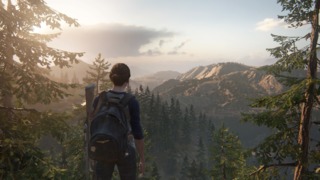
The clear winner of the “Toughest Act to Follow” award, The Last of Us Part II had the unenviable task of continuing a story with a perfect ending. On a conceptual level, I had the same concerns with it as I had with the new Star Wars trilogy… why do we have to cruelly drag these poor characters, who went through so much already, back to hell? Even stories that don’t end happily-ever-after at least give us the peace to stop thinking about the inevitable. But the world of The Last of Us is about ugly truths, and this game fearlessly, wincingly goes for it. Of course the story has been dissected in every possible way already, but besides the story, The Last of Us Part II is also an utterly state-of-the-art video game. The sheer craft and detail on display in Naughty Dog’s games continues to astound me, and I would spend tons of time in this one just examining the flawless detail in the weapon upgrade system, for example. I defy you to show me a better-looking weapon upgrade system!! One doesn’t exist. And I love the survival horror-y, weighty feel of the action, and such incredible touches as how Ellie might go from ragged breathing having just sprinted to cover, to then holding her breath as a foe draws near. I wrestled with this game--I felt like it wanted me to wrestle with it. But its beautiful moments and bold choices left me thinking about it, and enough time has passed since I played through it that I know it’s stuck with me.
13 Sentinels: Aegis Rim
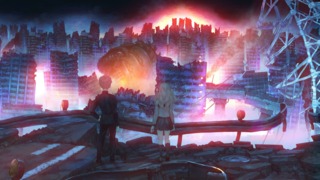
I will always pay attention to any new game from Vanillaware for their unique artistry and their best-in-class depictions of delicious food, and 13 Sentinels is my favorite game of theirs yet. I feel a strong kinship with and connection to this game, as it explores ideas I in turn was very interested to explore through my work on Transistor and Pyre, games that ultimately led to Hades. 13 Sentinels essentially is two games in one: An interactive visual novel where you directly control a large ensemble cast through an ambitious, labyrinthine sci-fi story, and a satisfying active-time-battle light strategy game where you defend a city using a handful of piloted giant robots against an onslaught of invading enemies. These halves of the game are deeply connected through the characters, and the story is wildly complex yet ultimately almost surprisingly coherent, giving you a lot of credit as a player to piece together tons of different narrative threads that connect all the principal characters’ lives.
13 Sentinels has a deliberate pace, taking plenty of time to build up to its terrific payoff, and doesn’t develop the relationships at the heart of the story as well as I’d like, but I love what it’s going for and love what it is. It reminds me of so much of my favorite sci-fi, and yet there’s also nothing like it. Plus it has some of the best 2D artwork of any game ever, loaded with great detail. I really appreciate when animation serves the story, and you can tell so much about the game’s cast of characters just from how they walk. The English voice cast also does a consistently terrific job bringing their characters to life.
Tony Hawk's Pro Skater 1+2
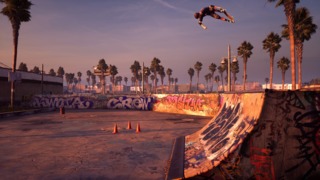
I was a little late to the Tony Hawk’s Pro Skater party back in the day, and only really got into the series with Pro Skater 3. But I knew of the legendary, genre-defining status of its two predecessors, so this remake of those games was perfect for me. I was pleased and relieved that it nailed the raw speed and brisk feel of the originals, because if the feel is even slightly off, or the loading times force you to sit around at all, it would have been a bust. So I could tell a lot of care went into this package, and I liked both how it felt like a throwback, and like a very 2020 experience at the same time (the school level notes school is out due to a pandemic, for instance... a detail I would normally find unsettling, but in this game it felt like an empathetic, knowing smile).
I’ve always loved games that let me explore worlds and discover interesting told stories in unique ways, and as well as games that are highly responsive and smooth to play, rewarding precise interaction and inviting me to excel. Tony Hawk is a great example of the latter category, where mastering the controls almost feels like learning a musical instrument or something like that, eventually leading to your ability to pull off these virtuosic performances. It’s a game where you can just get in the zone, and keep surprising yourself with your ability to string together even more impossible combinations of tricks.
Honorable Mention: Monster Train
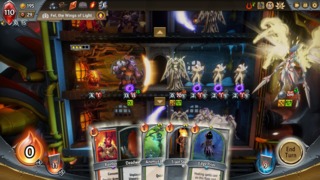
At first I was turned off by Monster Train’s naked similarity to the deck-building roguelike, Slay the Spire, one of my favorite games of last year. But I remind myself that genres are initially defined through the imitation of and recasting of successful design elements from some innovative and popular game. Past the surface mechanics, Monster Train has such a different structure from Slay the Spire that I soon looked past my initial impression and found myself becoming more and more drawn in. The object is to defend your hell-train from the invading forces of heaven, by setting up defensive units and supporting them with spells and upgrades. The rogue-like structure means every play-through is different, and a variety of unique deck types mixes up the play in interesting ways. Monster Train ended up being my “comfort food” game of the year, something I could play and enjoy over and over to unwind after a day of working on my own stuff.